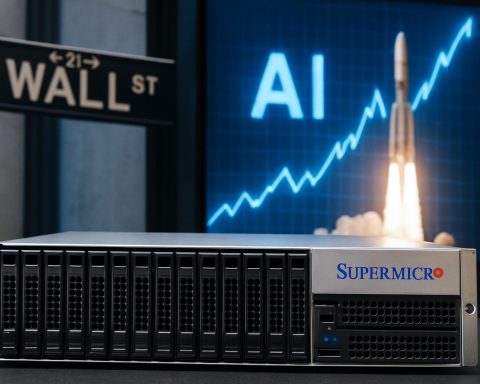- BYD introduces the “God’s Eye” driver-assistance system across its models without increasing prices.
- The God’s Eye system features three versions: DiPilot 600 for elite vehicles, DiPilot 300 for flagship models, and DiPilot 100 for cost-effective variants.
- Each version incorporates advanced technologies like LiDAR sensors, cameras, and ultrasonic sensors to enhance driving precision and safety.
- BYD’s initiative aims to make cutting-edge automotive technology accessible to a wider audience, setting a new benchmark in the competitive market.
- This bold move challenges major competitors like Tesla, NIO, Li Auto, and XPeng to innovate further.
- “God’s Eye” is a significant step towards democratizing autonomous driving and reshaping the future of transportation.
- BYD’s success in Hong Kong contrasts with tempered excitement in the U.S. due to trade tensions.
Prepare for a seismic shift in the electric vehicle landscape as BYD Company rolls out its groundbreaking “God’s Eye” driver-assistance system across most models—without a hike in prices. Imagine cruising with the omnipresent sight of God’s Eye, guiding every twist and turn with unparalleled precision. This bold move is set to make cutting-edge technology accessible to everyone, raising the bar in the fiercely competitive Chinese automotive market.
Unveiling God’s Eye: At a dazzling event in Shenzhen, BYD showcased its extraordinary system, offering three distinct tiers to suit various drivers. The premium God’s Eye A, known as DiPilot 600, flaunts three LiDAR sensors, designed for Yangwang’s elite vehicles. The mid-range God’s Eye B, or DiPilot 300, features a single LiDAR unit, enhancing BYD’s flagship models’ sophistication. Even the cost-effective Seagull hatchback, armed with God’s Eye C (DiPilot 100), benefits from 12 cameras and ultrasonic sensors.
A Visionary Step Forward: BYD’s visionary founder, Wang Chuanfu, stresses the importance of democratizing autonomous driving. This strategic leap sets new challenges for competitors like Tesla, NIO, Li Auto, and XPeng. While BYD’s stock has soared to unprecedented heights in Hong Kong, ongoing trade tensions temper excitement in the U.S.
Key Takeaway: God’s Eye isn’t just another feature; it’s a game-changer. It propels us toward a future where advanced automotive technology is available to all, making roads safer and driving more efficient. As BYD pioneers this initiative, it’s reshaping the future of driving—we’re fast on the road to autonomy, and God’s Eye is lighting the way. Buckle up! The journey into the future starts now.
BYD’s ‘God’s Eye’: The Game-Changing Driver Assistance System Transforming the EV Landscape
How is BYD’s “God’s Eye” Different from Other Driver Assistance Systems?
BYD’s “God’s Eye” system sets itself apart through its accessibility and affordability, offering features typically reserved for high-end models across various price points. The system includes three tiers to cater to different market segments:
– DiPilot 600 (God’s Eye A): Incorporates three LiDAR sensors for advanced precision, aimed at Yangwang’s luxury vehicles.
– DiPilot 300 (God’s Eye B): Integrates a single LiDAR unit, enhancing BYD’s flagship models.
– DiPilot 100 (God’s Eye C): Utilizes 12 cameras and ultrasonic sensors for the budget-friendly Seagull hatchback.
Unlike competitors who often limit advanced features to premium models, BYD democratizes cutting-edge technology, offering sophisticated driver-assistance at scalable prices.
What Does the Introduction of God’s Eye Mean for the Future of Electric Vehicles?
The introduction of “God’s Eye” by BYD signifies a monumental shift towards making advanced driver-assistance systems widely accessible. Not only does this evolution push the envelope in terms of technology, but it also drives competitive innovation across the automotive industry. The implications of God’s Eye go beyond individual safety, potentially transforming urban transport infrastructures with more efficient and safer self-driving capabilities.
The integration of affordable LiDAR technology into everyday vehicles suggests a future where autonomous driving becomes a standard experience. This positions BYD at the forefront of an era where smart technology boosts market dynamics, challenging rivals like Tesla and XPeng to accelerate their innovation efforts.
What are the Implications for Competitors Like Tesla and NIO with the Launch of God’s Eye?
BYD’s move introduces new challenges for established EV producers like Tesla, NIO, Li Auto, and XPeng, pressuring them to up their game in technological innovation and pricing strategies. While these companies have been strong innovators, BYD’s cost-effective approach forces them to reconsider their resource allocation, product offerings, and pricing models to remain competitive.
By setting a new standard in what can be offered at different price points, BYD heightens market expectations, potentially intensifying the race for expanding self-driving technologies in mass-market vehicles. This development prompts competitors to explore partnerships, enhance R&D investment, and strive for new breakthroughs to capture the growing demand in the global EV landscape.
For more on BYD and this transformative innovation, visit BYD Global. Learn how they are revolutionizing the future of driving and transforming automotive technology.












